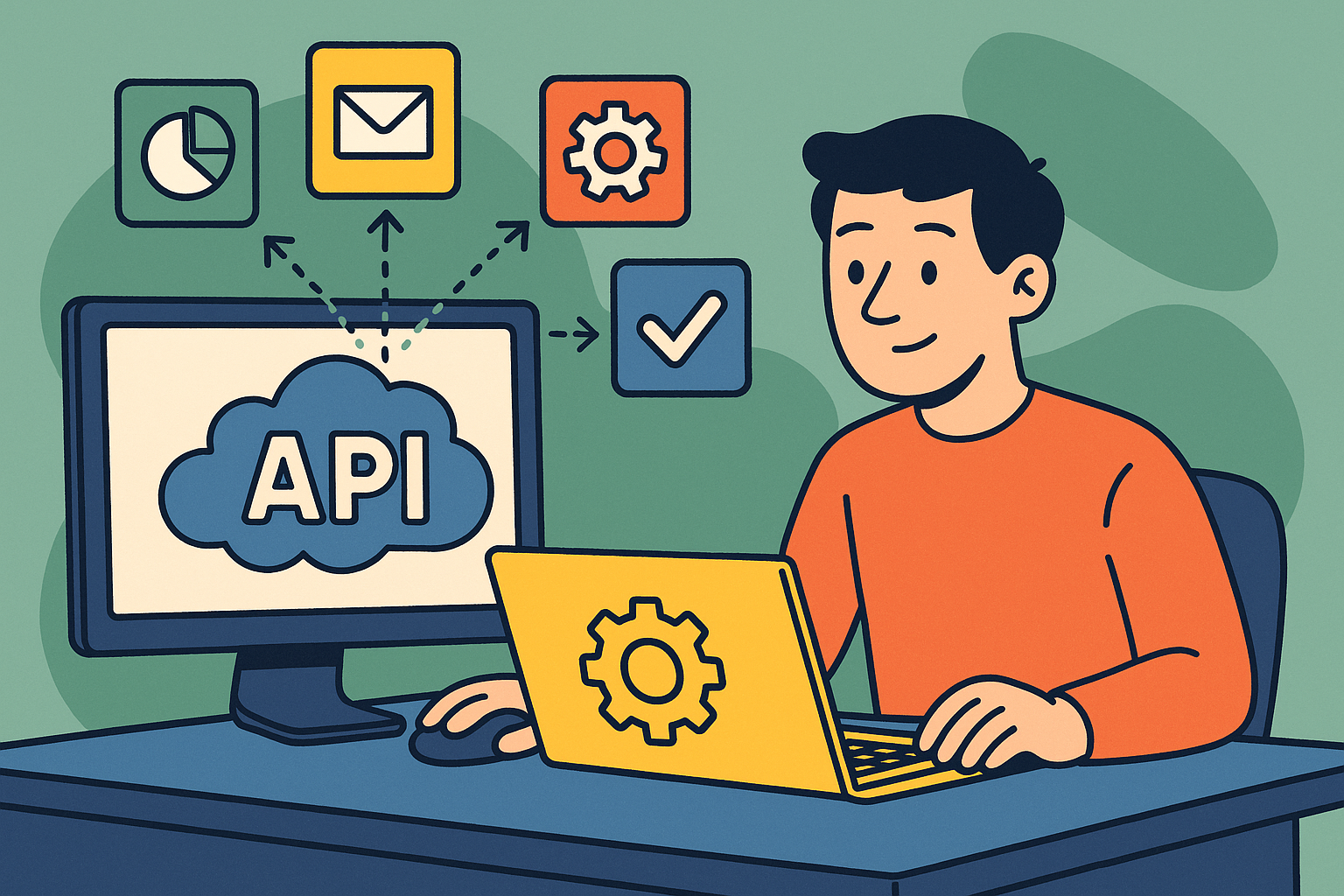Unravelling the Complexities of Application Integration Testing
In our modern interconnected world, the complexity and functionality of systems are growing at an exponential rate. Various applications are constantly interacting, sharing data, and coordinating activities. In this complex scenario, application integration serves as the critical glue that binds different software applications together, allowing them to operate cohesively as a single functional unit.
Application integration is more than just a technological construct; it's a vital strategy that enables disparate systems to communicate and work in tandem. This symbiotic relationship, enabled through carefully designed interfaces and protocols, ensures that data flows smoothly, operations are coordinated, and business processes are streamlined.
However, this integration is not a plug-and-play affair. It requires careful planning, design, and most importantly, testing. Integration testing, particularly application integration testing, is the invisible yet sturdy bridge that ensures that the integrated system functions without a hitch. It uncovers potential flaws and weaknesses, allowing for them to be addressed before they escalate into major problems.
The significance of integration testing is exemplified by the multiple levels of integration that modern systems often require. From integrating databases and servers to combining entire services and applications, the task is multifaceted and intricate. It involves not just functional compatibility but also performance alignment, security synchronization, and user experience optimization.
This comprehensive examination will explore the strategies specific to application integration testing. It's not just about the technicalities; it's about understanding why integration testing is crucial. In an era where a minor glitch can lead to significant disruptions, the need for robust application integration testing strategies cannot be overstated.
The landscape of application integration testing is as diverse as it is complex. Strategies range from manual scrutiny to automated analysis, from big-bang approaches to incremental methodologies, and from functional testing to performance evaluation. Tools and technologies are continually evolving, shaped by the dynamic needs of the industry.
In the forthcoming sections, we will delve into these strategies, exploring their intricacies, examining the tools that empower them, discussing best practices, and even illuminating them through real-world case studies. We'll also look towards the future, considering the emerging trends and innovations that are shaping the next frontier in application integration testing.
This post is not merely a technical guideline; it's a comprehensive understanding of a field that lies at the heart of modern technology. It's about appreciating the art and science of ensuring that integrated applications don't just coexist but thrive together.
Overview of Application Integration Testing
Application integration testing is a nuanced field that exists at the intersection of development, quality assurance, and business strategy. It's not merely a step in the development process; it's a fundamental bridge that ensures a seamless connection between various components within an integrated system.
What it Entails
Application integration testing delves into the verification of interactions between different integrated components or systems. It ensures that data is accurately exchanged, processes are synchronized, and the overall functionality is aligned with the expectations. The goal is not only to validate that the integration is working but to ascertain that it's working optimally.
Imagine a symphony orchestra where various instruments must play in harmony. Application integration testing is akin to the conductor, ensuring that each instrument (component) plays its part perfectly, contributing to a flawless performance.
Challenges in Testing
The complexity of integration poses unique challenges that require specific strategies to overcome. These challenges are multifold:
- Complex Dependencies: The dependencies between various components can be intricate. Ensuring that a change in one module doesn't negatively affect another is a delicate balancing act.
- Varied Data Formats: Different applications may use different data formats. Ensuring that these diverse formats interact smoothly is a critical part of integration testing.
- Synchronization Issues: Timing and synchronization between different components must be precise. Even a minor misalignment can lead to significant issues.
- Environment Variability: Integration testing often has to account for different environments where the application might run. This adds another layer of complexity to the testing process.
- Scalability Considerations: Testing must ensure that the integrated application can scale according to the needs without losing functionality or performance.
Importance of Testing Strategy
The complexity of application integration requires a robust and well-thought-out testing strategy. It's not just about finding defects; it's about understanding how different parts of the system interact, predicting potential problem areas, and creating testing scenarios that can accurately assess the integration's functionality and performance.
Alignment with Business Goals
Application integration is not just a technical endeavor. It's closely aligned with business goals. Ensuring that integration supports business processes efficiently is a critical aspect of testing. Whether it's improving customer experience, enhancing operational efficiency, or enabling new business models, integration testing must align with the broader objectives of the organization.
A Collaborative Effort
Integration testing is not a siloed task. It requires collaboration between developers, testers, business analysts, and even end-users. It's a collective pursuit of quality that involves understanding the system from various perspectives.
Application integration testing is a multifaceted domain that goes beyond mere verification. It's about understanding the integrated system's dynamics, confronting the unique challenges, employing strategic thinking, and collaborating across different domains. It's a vital cog in the wheel of software development that ensures that the integrated components function cohesively, efficiently, and in alignment with both technical and business objectives.
Types of Integration Testing for Applications
The field of application integration testing is a nuanced one, and the approach taken can substantially affect the efficacy of the testing process. Two of the most distinct methodologies for this are the Big Bang Approach and the Incremental Approach.
The Big Bang Approach
The Big Bang Approach is often considered the most straightforward, but that doesn't mean it's simple. In this approach, all the modules or components to be integrated are compiled together, and the entire application is tested in one go. This method aims to replicate a real-world scenario where everything is interconnected, making it particularly useful for end-to-end testing of less complex systems.
Advantages and Challenges
- Real-world Testing: The biggest advantage is its closest resemblance to real-world scenarios, enabling an integrated testing environment where everything is deployed and runs in tandem.
- Time-saving (Sometimes): For smaller projects, the Big Bang can be quicker because you don't have to wait for individual modules to be ready for incremental integration.
However, the Big Bang Approach comes with its set of challenges.
- Problem Localization: If an issue arises during testing, pinpointing the exact module where the problem resides can become a Herculean task due to the simultaneous interaction of multiple components.
- Resource Intensive: The testing environment needs to mirror the production environment closely, often requiring considerable hardware and software resources.
Incremental Approach
The Incremental Approach takes a more methodical route by integrating modules one at a time and testing them sequentially or in small combinations. There are subcategories within this approach, such as the Top-Down and Bottom-Up methods, which help streamline the integration process even further.
Top-Down Method
- Hierarchical Testing: Here, you start from the top-most module and work your way down the hierarchy. This enables early validation of high-level business logic and functionalities.
- Use of Stubs: The main challenge in this method is the need for "stubs" to simulate lower-level modules that may not yet be developed, sometimes making it complex and resource-intensive.
Bottom-Up Method
- Foundation First: You start with the lower-level modules, ensuring that the building blocks of your application are solid before moving up.
- Use of Drivers: Like the top-down method, the bottom-up approach requires "drivers" to simulate the higher-level modules that interact with lower-level functionalities.
Sandwich Method
- Balanced Testing: This is a hybrid approach that combines both top-down and bottom-up methods, aiming to balance the strengths and weaknesses of each.
- Complexity: While it offers a balanced approach, the Sandwich Method demands a higher level of planning and management to ensure that both ends meet seamlessly in the middle.
Strategies and Tools for Application Integration Testing
The field of application integration testing is as diverse as it is complex. To navigate this labyrinth, it's essential to have well-defined strategies and the right tools. This section delves into the various methods and instruments that aid in a comprehensive and efficient application integration testing process.
Strategizing Application Integration Testing
-
Understanding the Integration Landscape
- Mapping Dependencies: Identifying and understanding the dependencies between various components is the starting point for integration testing. This can include recognizing how data flows, how processes are triggered, and where potential bottlenecks may occur.
- Identifying Critical Pathways: Some integrations are more crucial than others. Identifying these key pathways and prioritizing them in testing can ensure that vital functionalities are validated first. -
Creating Realistic Testing Scenarios
- Simulating Real-world Conditions: Creating test cases that simulate real-world scenarios can lead to more accurate validation. This might include considering network latency, different data formats, user behaviors, and more.
- Emphasizing Edge Cases: These are scenarios that are outside the usual operational conditions. Testing these extreme situations can uncover unexpected vulnerabilities. -
Ensuring Scalability and Performance
- Load Testing: This tests how the integration behaves under heavy load. It helps in understanding how scalable the integrated system is and if it can maintain performance under stress.
- Stress Testing: Stress testing takes this a step further and pushes the system beyond its limitations. It helps in identifying the breaking point and what fails first. -
Security Considerations
- Security Protocols Testing: Integration often involves data exchange, sometimes sensitive. Ensuring that security protocols are correctly implemented and tested is crucial. -
Continuous Monitoring and Feedback
- Monitoring Tools: Using monitoring tools to keep track of the integration in real-time can aid in early detection of any issues. Continuous feedback enables a more agile response to potential problems.
Tools for Application Integration Testing
The right tools empower the strategies and make the complex task of integration testing manageable and more precise. Here are some popular tools and how they align with different strategies:
- JUnit and TestNG: Widely used for unit and integration testing in Java environments, these tools provide a robust framework to create and manage test cases.
- SoapUI: A tool specifically designed for testing SOAP and REST web services. It's beneficial in testing the web services integration aspect of applications.
- Apache JMeter: This is an excellent tool for performance testing, including load and stress testing. It simulates multiple users and helps in understanding how the integration behaves under heavy load.
- Selenium: While primarily known for UI testing, Selenium can also be leveraged for integration testing, especially when user interactions trigger integration events.
- Jenkins: For continuous integration and continuous testing, Jenkins provides automation that ensures that integration is validated frequently and consistently.
Future Trends and Considerations
The world of application integration testing is not static; it's ever-evolving. Emerging trends such as Artificial Intelligence-driven testing and continuous integration are shaping the future landscape. Moreover, security and compliance considerations cannot be overlooked. As technology advances, so do the associated risks, necessitating stringent measures to ensure safety and conformity with regulations.
As Martin Fowler, a renowned software developer, author, and international public speaker on software development, aptly stated, "Any fool can write code that a computer can understand. Good programmers write code that humans can understand." The same principle can be extended to integration testing. The strategies must be comprehensive, human-centric, and aligned with the ever-changing technological landscape.
Synergy Achieved: A Reflection on the Imperative of Application Integration Testing
Application integration testing strategies form the backbone of a system's integrity and performance. Through methods like Big Bang or Incremental, employing manual or automated testing, and aligning with best practices, this process aims for perfection. Real-world applications and future trends add layers of complexity and relevance to this field.
In the words of Kent Beck, a prominent software engineer, creator of extreme programming, and co-author of the Agile Manifesto, "I'm not a great programmer; I'm just a good programmer with great habits." Application integration testing is about cultivating those great habits, ensuring that the integrated components work seamlessly as a unified whole.
We invite you to delve deeper, explore further, and perhaps share your insights and experiences related to application integration testing. In a world that's increasingly interconnected, the pursuit of perfection in integration is not just a choice but a necessity.
 is now
is now


